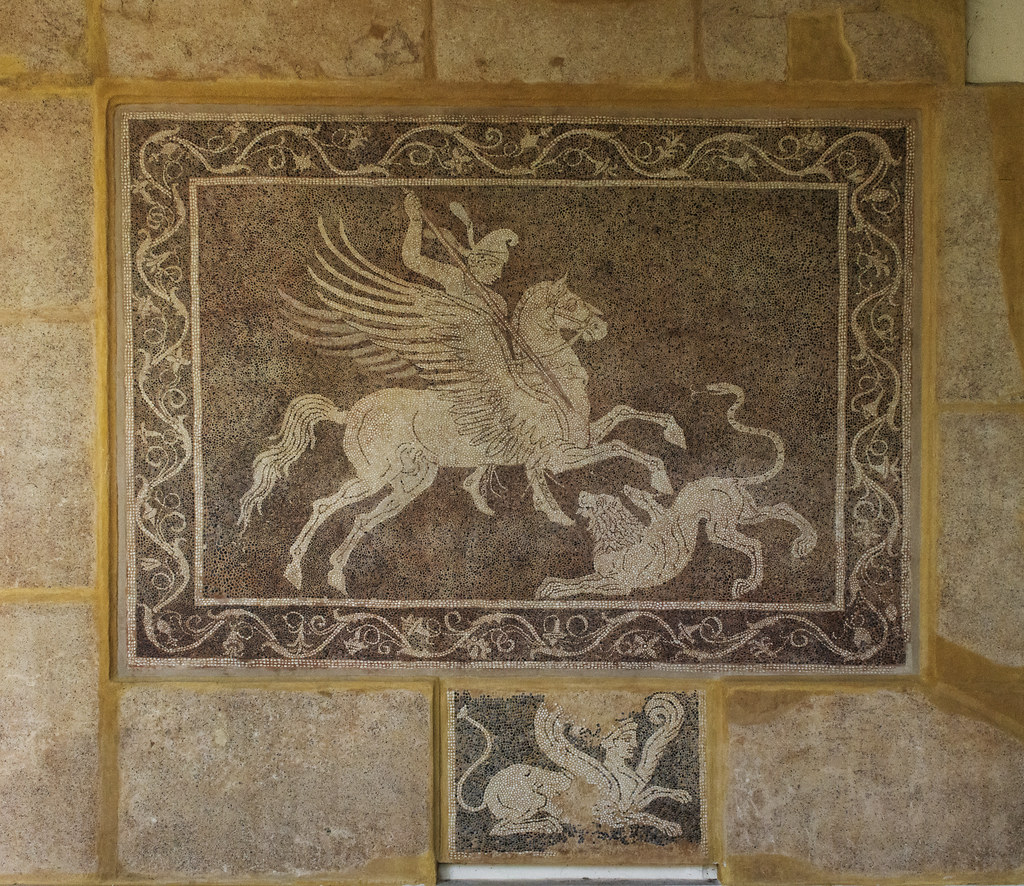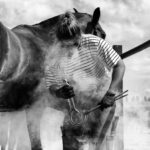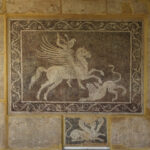The ancient world was filled with fantastical creatures that captured the imagination of storytellers, poets, and artists. Among these magnificent beings, mythical horses held a special place in Greek and Roman mythology. These weren’t ordinary steeds but divine creatures imbued with supernatural powers and extraordinary abilities. From the winged Pegasus soaring through the skies to the fire-breathing horses of Diomedes, these mythical equines represented freedom, power, and the untamable forces of nature. They served as companions to gods and heroes, playing crucial roles in some of the most celebrated tales of antiquity. Their legacy continues to influence our culture today, appearing in literature, art, and popular media, reminding us of humanity’s enduring fascination with these majestic creatures.
The Magnificent Pegasus: Symbol of Poetic Inspiration
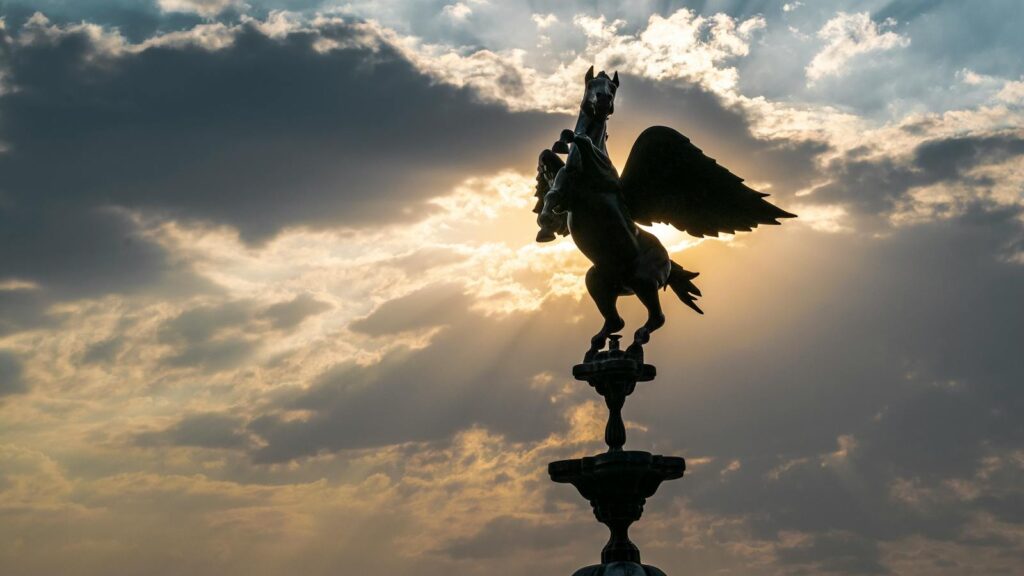
Perhaps the most renowned mythical horse in Greek mythology, Pegasus was a magnificent white stallion with wings who sprang from the blood of Medusa when Perseus beheaded the Gorgon. This divine creature was not just a marvel of beauty but held significant symbolic power, becoming associated with poetic inspiration after creating the fountain Hippocrene with a strike of his hoof on Mount Helicon. The Muses, goddesses of the arts, frequented this fountain, and those who drank from its waters were said to be blessed with the gift of poetry. Later in his story, Pegasus was tamed by the hero Bellerophon with the help of a golden bridle given by the goddess Athena, enabling the pair to defeat the monstrous Chimera. Eventually, Zeus transformed Pegasus into a constellation, eternally preserving his form in the night sky as a reminder of his divine nature.
Arion: The Immortal Steed of Poseidon
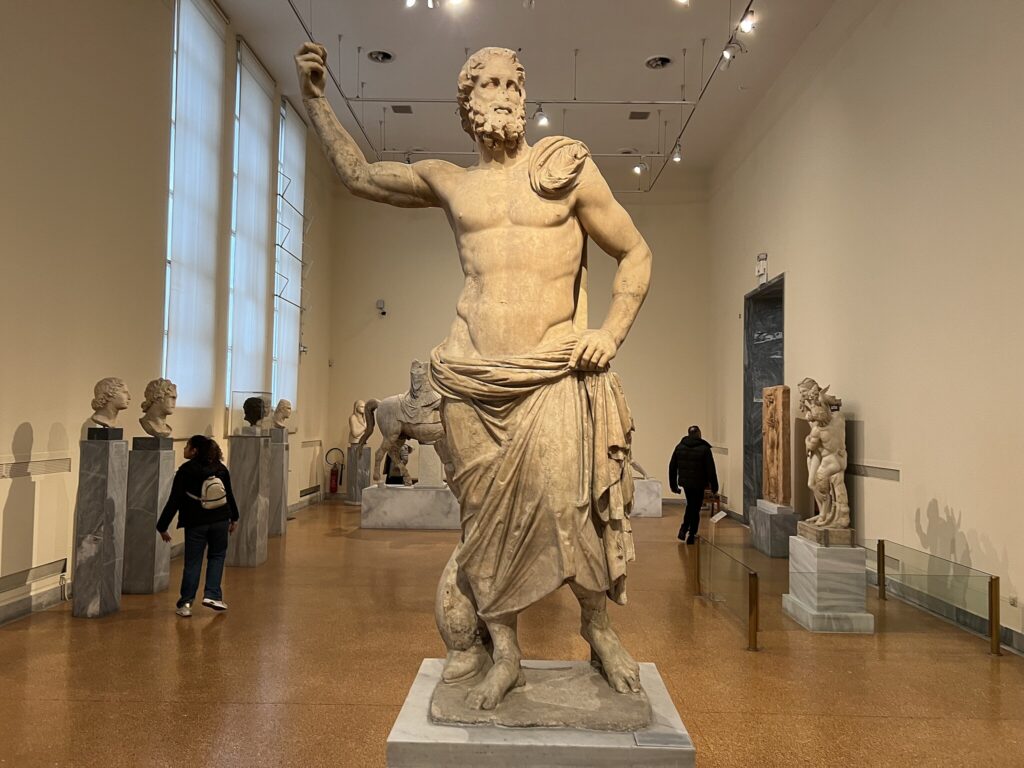
Arion stands out among mythological horses for his extraordinary origins and capabilities. Born from the union of Poseidon, god of the sea, and Demeter (or in some versions, Earth goddess Gaia) while both deities were in equine form, Arion possessed immortality and the remarkable ability to speak with a human voice. His most distinctive physical feature was his flowing blue mane that mirrored the waves of his father’s domain. According to legend, Arion was faster than the winds themselves, making him an unbeatable force in any contest of speed. The most famous tale involving this divine horse recounts how he saved the poet Arion (sharing the same name) from drowning by carrying him safely to shore, demonstrating not only his physical prowess but also his compassionate nature toward humans.
The Fierce Horses of Diomedes
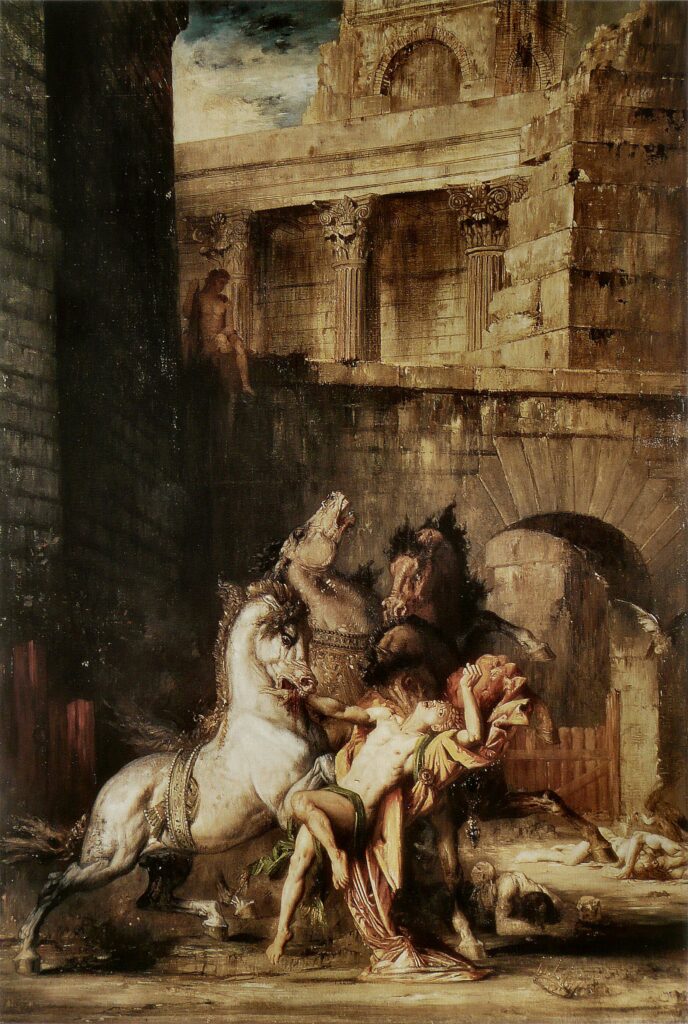
Among the most terrifying equines in Greek mythology were the four mares owned by Diomedes, the brutal king of Thrace. These were no ordinary horses but man-eating monsters with an insatiable appetite for human flesh. Diomedes, son of Ares and known for his cruelty, fed unwary travelers and strangers to these savage beasts, creating a reign of terror throughout his lands. The capturing of these horses became the eighth labor of Heracles, who successfully subdued them by feeding their own master to the mares, an ironic punishment that fit Diomedes’ crimes. Some versions of the myth suggest that after eating their master’s flesh, the horses became docile and manageable, losing their taste for human flesh. Heracles then brought them back to King Eurystheus, who dedicated the now-tamed horses to Hera, though some accounts claim they were released onto Mount Olympus where they were eventually destroyed by wild beasts.
Xanthus and Balius: The Immortal Horses of Achilles
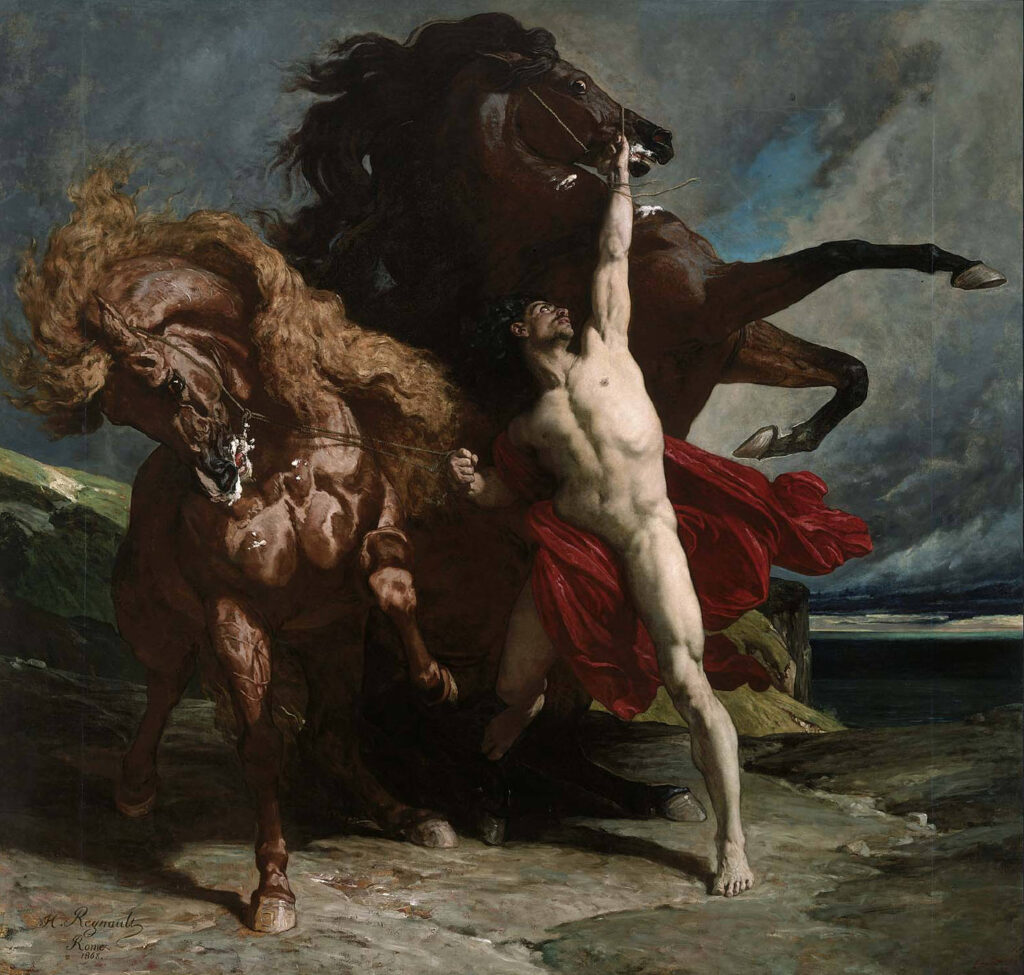
The divine steeds of Achilles, Xanthus and Balius, were extraordinary creatures gifted to Peleus (Achilles’ father) by Poseidon on his wedding day. These magnificent horses were immortal and possessed the unique ability to run as swiftly as the wind, making them unmatched on any battlefield. What truly set these horses apart from other mythical equines was their ability to speak human language, as demonstrated dramatically in Homer’s Iliad when Xanthus prophesied Achilles’ approaching death after Patroclus fell. Born from the harpy Podarge and the West Wind Zephyrus, these horses represented the perfect blend of divine speed and preternatural intelligence. Their loyalty to Achilles was unwavering throughout the Trojan War, and they were said to have wept genuine tears when they sensed their master’s impending doom, showing emotional capacity beyond that of normal animals.
The Flesh-Eating Mares of Glaucus
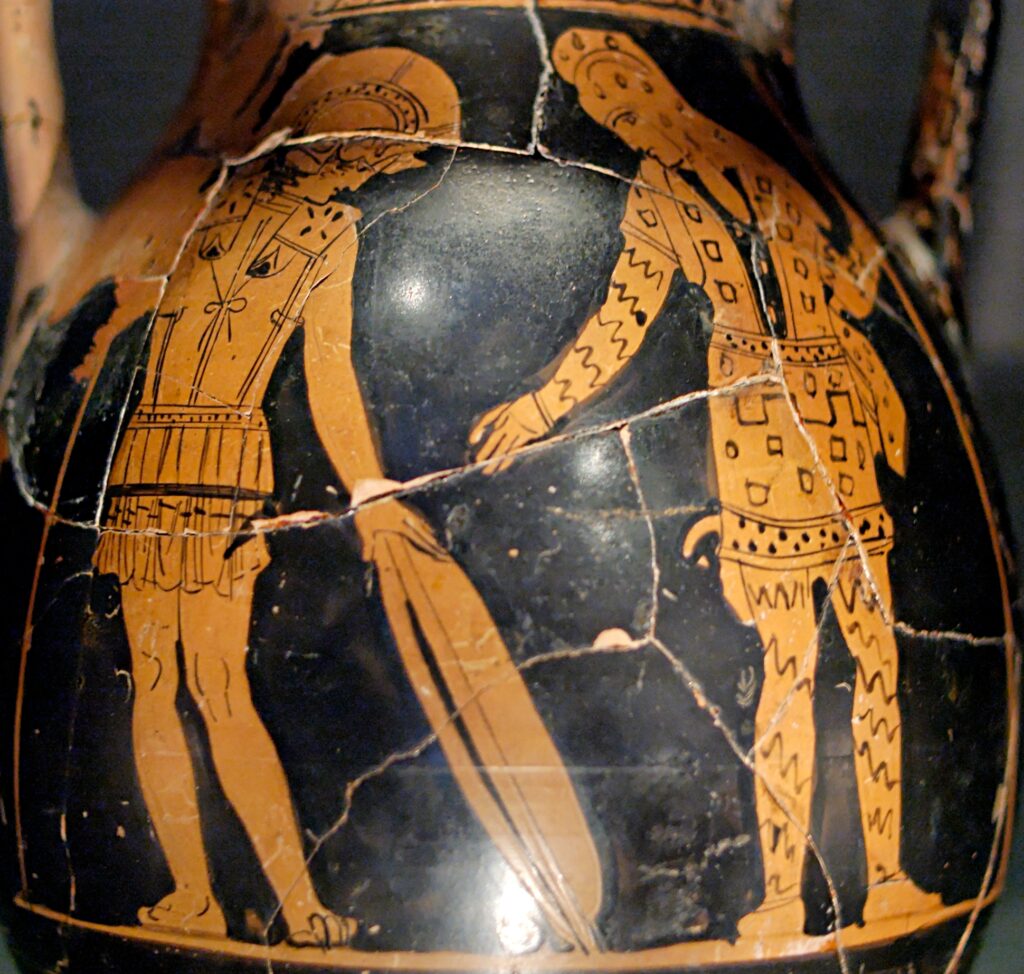
The disturbing tale of Glaucus and his mares reveals the darker side of horse mythology in ancient Greece. Glaucus, son of Sisyphus and king of Corinth, bred a stable of mares that he intended to use for racing in the funeral games. Seeking to gain an advantage in competitions, he made the fatal mistake of denying his horses proper food, believing that hunger would make them run faster. Instead of creating superior racers, he inadvertently turned them into savage, uncontrollable beasts. During one fateful chariot race, the starving mares went mad with hunger, turned on their master, and devoured him alive, proving the dangerous folly of his cruel training methods. This cautionary myth served as a warning about the consequences of mistreating animals and tampering with natural order, while also reflecting the ancient Greek belief that horses, particularly mares, could embody wild, untamable forces of nature.
The Horses of Helios: Bringers of Dawn
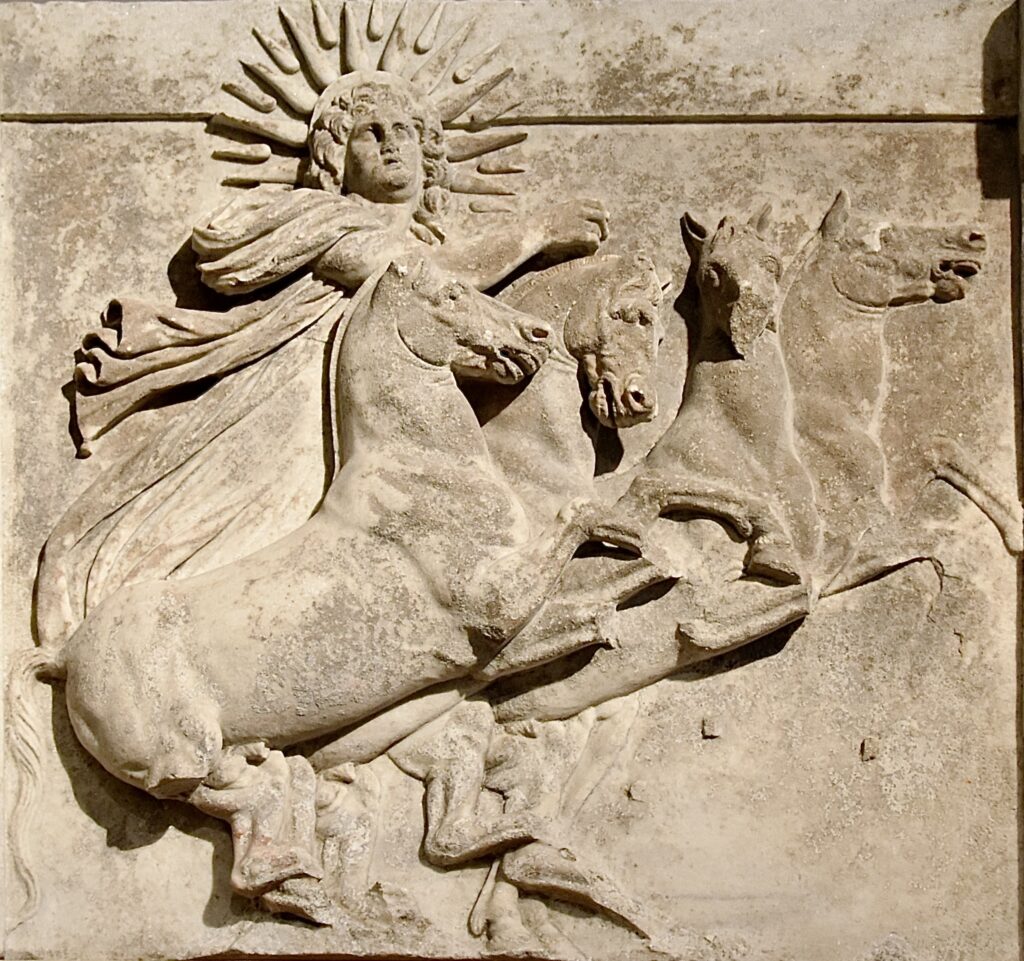
Helios, the sun god who predated Apollo in this role, rode across the sky each day in a golden chariot pulled by four magnificent horses whose names reflected their fiery nature: Pyrois (the Fiery One), Aeos (the Burning One), Aethon (the Blazing One), and Phlegon (the Flaming One). These divine steeds were no ordinary horses but immortal beings capable of breathing fire and traveling through the heavens without rest. Their daily journey began at dawn in the East, where they emerged from the ocean, and ended at dusk in the West, where they descended back into the waters to rest before the next day’s journey. The most famous story involving these horses comes from the myth of Phaethon, Helios’ son, who begged to drive his father’s chariot for a day but couldn’t control the powerful horses, resulting in a near-catastrophic journey that threatened to burn the earth until Zeus struck him down with a thunderbolt.
Bucephalus: Between Myth and History
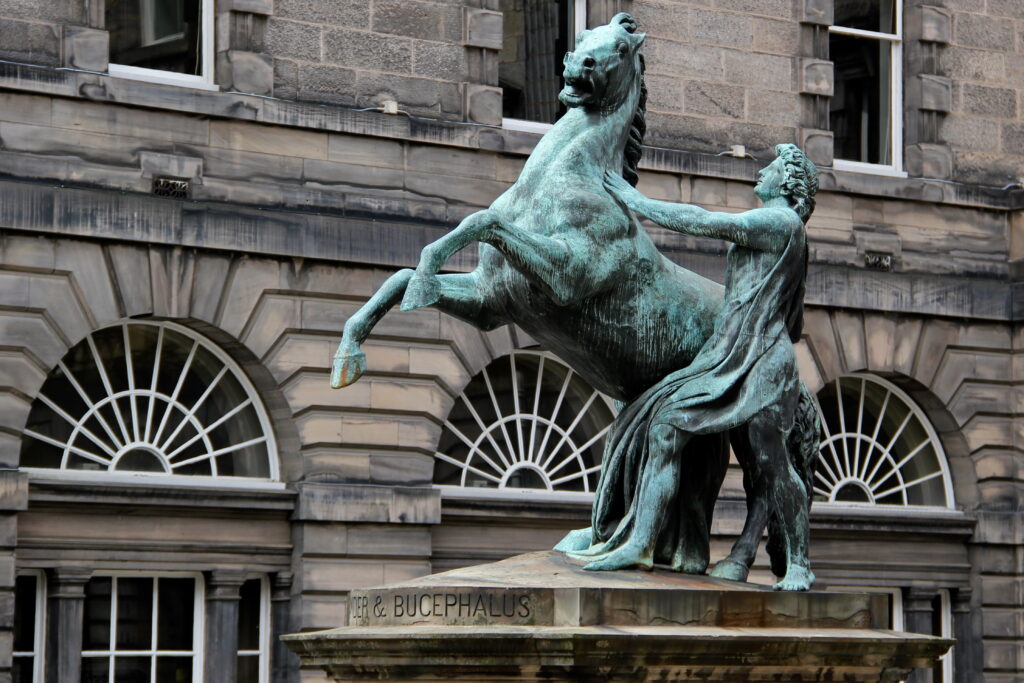
Bucephalus occupies a unique position between historical reality and mythological status as the famous warhorse of Alexander the Great. While undoubtedly a real animal, the legends that grew around this magnificent black stallion elevated him to nearly mythical status in ancient accounts. According to Plutarch, the horse was considered untamable until the young Alexander noticed that Bucephalus was afraid of his own shadow, then turned him toward the sun to calm him – a demonstration of the extraordinary connection between horse and rider. Bucephalus bore Alexander through numerous battles across his vast campaign of conquest, from Greece to India, becoming as famous as his master in the ancient world. When the beloved horse died in 326 BCE after the Battle of the Hydaspes, Alexander founded an entire city in his honor – Alexandria Bucephala (in modern Pakistan) – cementing the horse’s legendary status and demonstrating how even historical horses could achieve mythological significance in Greco-Roman culture.
The Centaurs: Half-Human, Half-Horse Beings
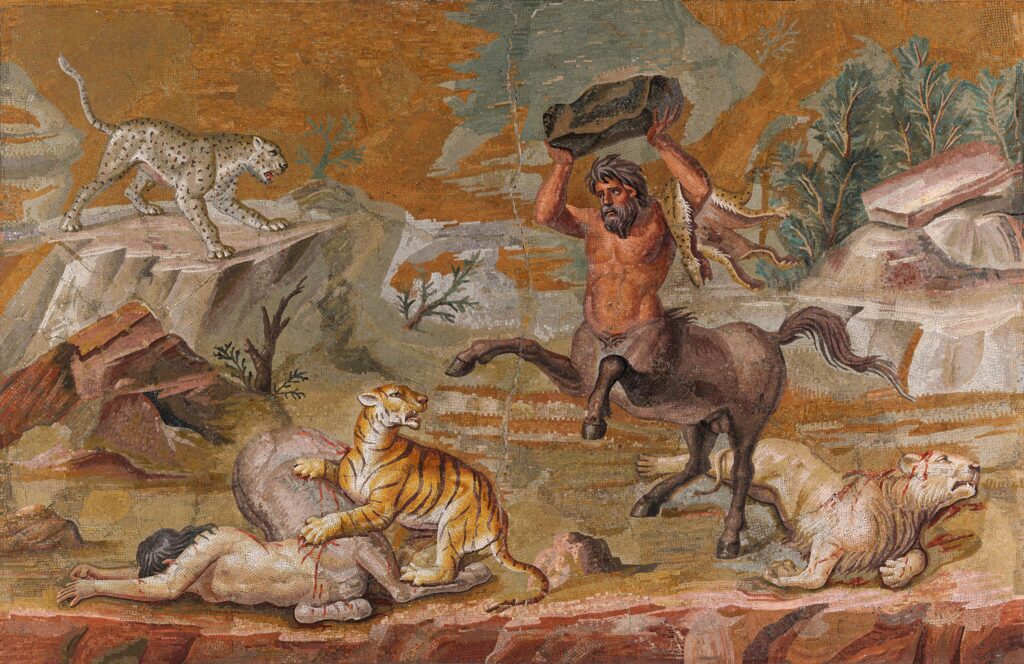
While not precisely mythical horses, the centaurs deserve mention as the most famous horse-hybrid creatures in Greek mythology, embodying both the noble and wild aspects of equine nature. Born from the union of Ixion and a cloud shaped like Hera (or in some versions, from Apollo and Hebe), centaurs had the upper body of a human joined seamlessly to the body and legs of a horse, creating a being that combined human intelligence with equine strength and speed. Most centaurs were depicted as wild, untamed creatures given to drunkenness and violence, as exemplified in the story of their battle with the Lapiths at Pirithous’ wedding, where they attempted to abduct the bride and other women. However, exceptions existed – most notably the wise Chiron, who tutored many Greek heroes including Achilles, Jason, and Asclepius, representing the potential for wisdom and nobility within the centaur nature. These complex beings symbolized the eternal tension between man’s rational mind and his baser, animalistic instincts.
Hippocampi: The Sea Horses of Poseidon
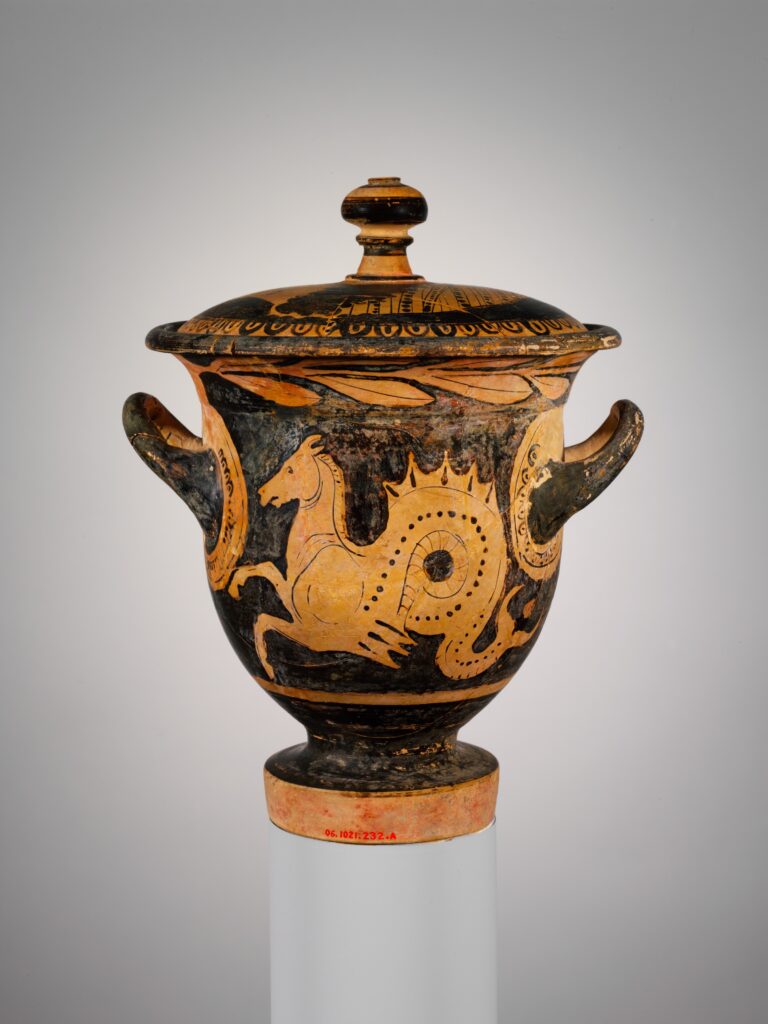
The hippocampi were magnificent creatures that served as the horses of the sea, pulling Poseidon’s chariot through the ocean depths with grace and power. Possessing the upper body and forelegs of a horse with the lower body and tail of a fish or sea serpent, these beings embodied the connection between Poseidon’s dual roles as god of horses and ruler of the seas. Their fish-like tails were often depicted with vibrant scales in shades of blue and green, while their equine parts maintained the muscular power and nobility associated with horses. Unlike many mythical creatures, hippocampi were generally benevolent, serving not only Poseidon but also sea nymphs and occasionally aiding lost sailors. Ancient artwork frequently depicted these majestic beings leaping through waves or drawing Poseidon’s shell-shaped chariot with their manes flowing like sea foam, creating visual representations that inspired the modern concept of seahorses centuries later.
The Swift Horses of Ares
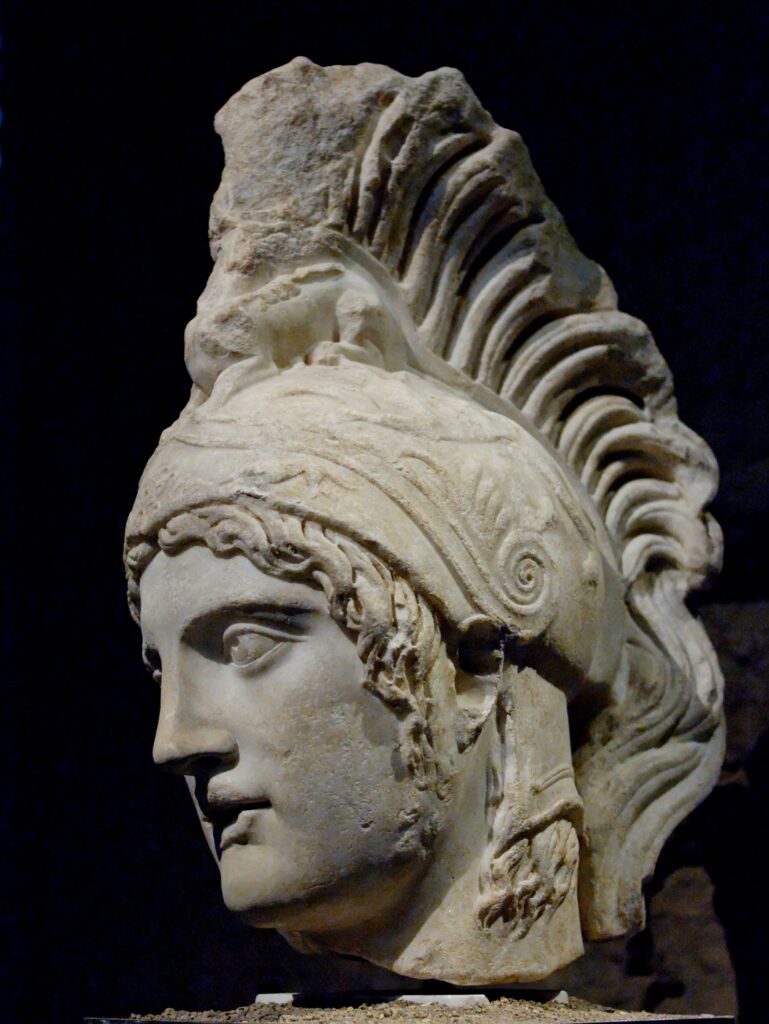
The god of war, Ares, possessed a team of four immortal horses that pulled his golden chariot into battle, their names reflecting the terror and destruction of warfare: Aithon (Red Fire), Phlogios (Flame), Konabos (Tumult), and Phobos (Fear). These divine steeds were said to breathe fire from their nostrils and their hooves struck sparks from any surface they touched, creating an intimidating vision that struck fear into the hearts of enemies. Unlike the horses of other gods, Ares’ team was described as having pitch-black coats and red eyes that glowed like embers, their appearance matching the grim aspect of their master. When not pulling Ares’ chariot, these horses were kept in Thrace, a region strongly associated with the war god, where they were said to graze on fields watered with the blood of fallen warriors. In some accounts, they possessed the ability to travel between the mortal world and the battlefield dimensions where Ares manifested during conflicts, making them transporters between realms as well as war steeds.
The Wooden Horse of Troy
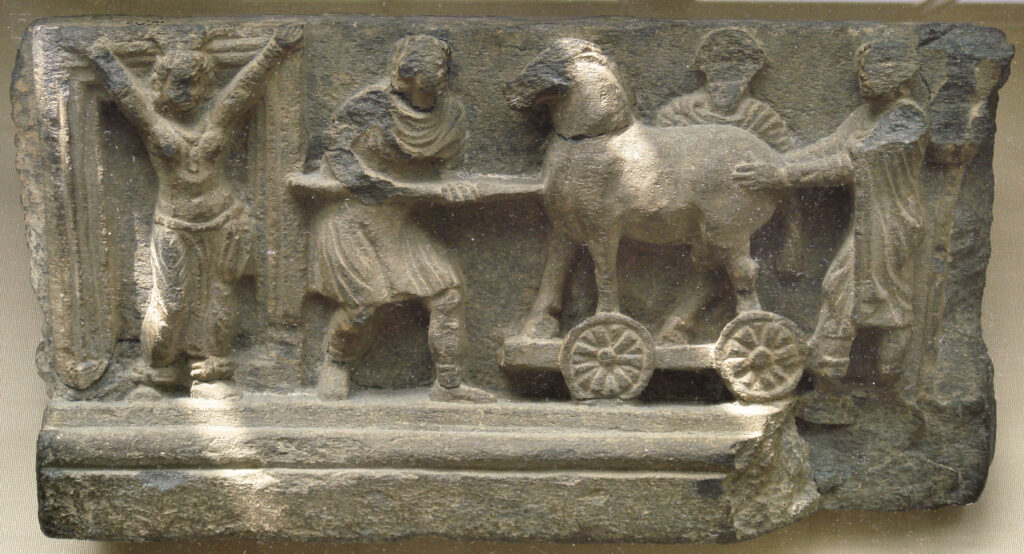
Perhaps the most famous “horse” in classical mythology wasn’t a living creature at all, but the ingenious Wooden Horse of Troy that ended the decade-long Trojan War. Conceived by Odysseus as a stratagem to infiltrate the impenetrable walls of Troy, this massive wooden construction contained a hidden compartment housing Greek soldiers while appearing to be a religious offering. The Trojans, believing the Greeks had abandoned the siege and left this impressive structure as a gift to Athena, brought the horse inside their city walls despite warnings from Laocoön and Cassandra. Under cover of night, the Greek warriors emerged from the horse’s hollow belly, opened the city gates for their waiting army, and conquered Troy through deception rather than direct assault. This legendary tale, immortalized in Virgil’s Aeneid, gave birth to the phrase “beware of Greeks bearing gifts” and demonstrates how the symbolism of the horse – representing strength, divinity, and nobility to the ancient Greeks – could be weaponized through cunning and misdirection.
The Legacy of Mythical Horses in Modern Culture
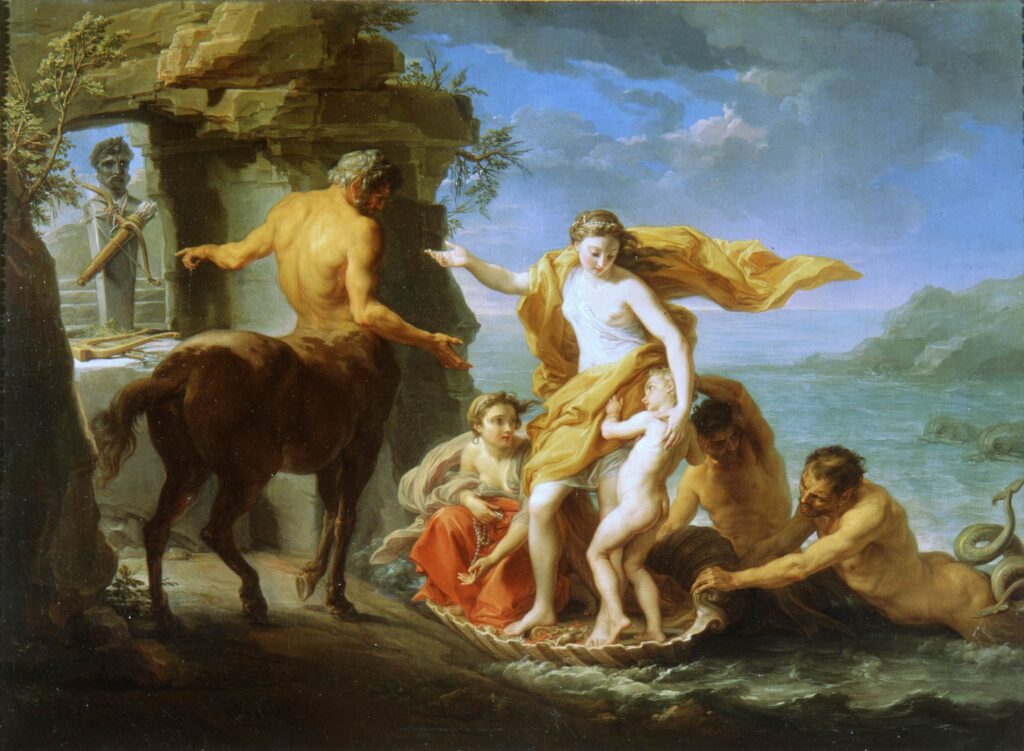
The powerful imagery of these ancient mythical horses continues to gallop through our modern imagination, inspiring countless adaptations in literature, art, film, and popular culture. Pegasus remains particularly ubiquitous, appearing as a corporate logo for companies seeking to evoke notions of creativity and freedom, while also featuring prominently in fantasy literature and films that draw on classical mythology. The concept of centaurs has been reimagined in modern fantasy worlds like those created by C.S. Lewis and J.K. Rowling, often maintaining their complex symbolism as beings caught between human rationality and natural instinct. Even video games frequently incorporate these mythical equines, with games like “God of War” and “Assassin’s Creed Odyssey” featuring encounters with creatures drawn directly from Greek and Roman legends. The enduring popularity of these mythical horses speaks to their psychological resonance across cultures and centuries, representing universal human desires for freedom, power, transcendence, and connection with natural forces that remain relevant regardless of technological advancement.
Interpreting the Symbolism of Divine Equines
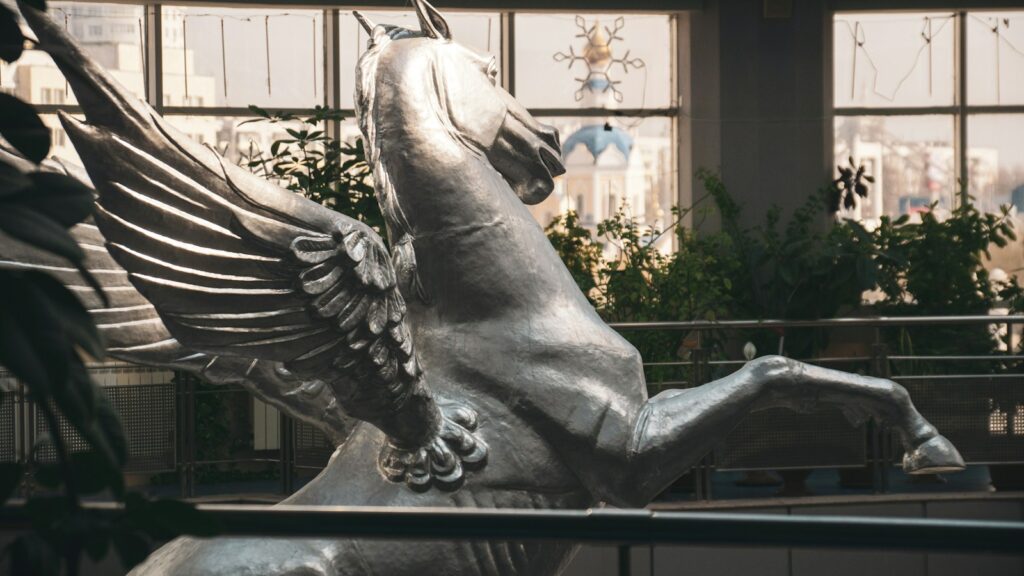
The prevalence of mythical horses across Greek and Roman legends invites deeper analysis of their symbolic significance within these ancient cultures. Horses themselves were highly valued animals associated with nobility, wealth, and military power, making their elevation to divine or supernatural status a natural extension of their practical importance. Many mythical horses served as intermediaries between realms – Pegasus between earth and sky, hippocampi between land and sea, and the horses of gods between mortal and divine spheres – reflecting the horse’s real-world role in connecting distant places through transportation. The untamable nature of many mythical equines, from the flesh-eating mares to the wild centaurs, may represent ancient anxieties about humanity’s tenuous control over natural forces and the constant threat of chaos. Meanwhile, the partnerships between heroes and their mythical steeds, like Alexander and Bucephalus or Achilles and his immortal horses, embody the ideal harmony between human intelligence and animal power that ancient Greeks aspired to achieve. These multifaceted symbols demonstrate how mythical horses functioned as vehicles not just for gods and heroes, but for complex cultural ideas about power, nature, and human potential.
CONCLUSION
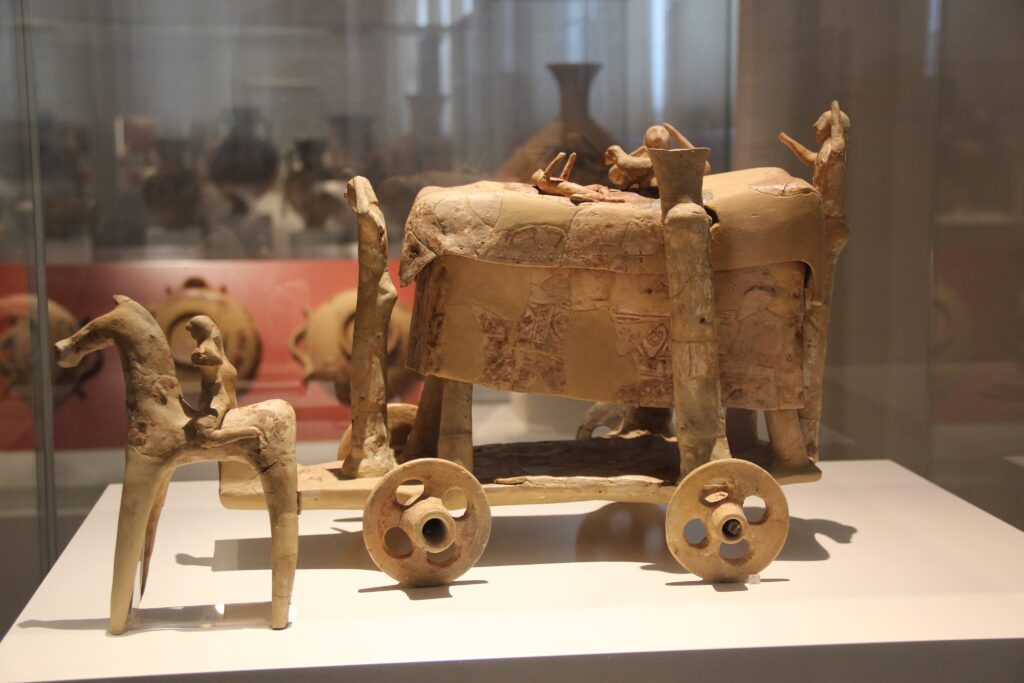
The mythical horses of Greek and Roman legend represent far more than mere fantastic creatures in ancient stories. Through their divine lineages, supernatural abilities, and profound connections with gods and heroes, they embodied fundamental cultural values and anxieties of classical civilization. Whether soaring through the heavens like Pegasus, traversing the seas like Poseidon’s hippocampi, or carrying warriors into battle like the steeds of Ares, these extraordinary equines transcended their animal nature to become powerful symbols that continue to resonate in our collective imagination. Their enduring legacy – spanning art, literature, language, and popular culture – testifies to the profound impact these magnificent creatures had on the ancient world and continues to have on our own. In exploring these myths, we glimpse not just the creative genius of ancient storytellers but also timeless truths about humanity’s relationship with the natural world and our endless fascination with beings that embody freedom, power, and transcendence.

